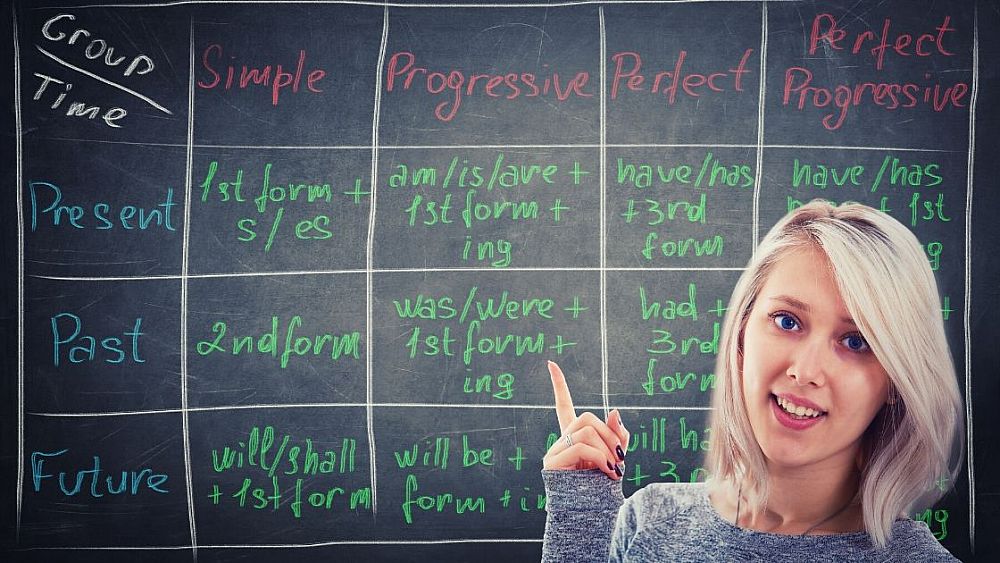Multiple Tenses: Boon or Bane for ESL Students

Tenses- Usually it creates tense for many ESL students during communication. It defines and differentiates the situation by time. Is time important in communication? Yes, it is. The wrong usage of tenses changes the exact meaning of the situation, what the speaker is trying to convey. So focusing tenses in grammar is more essential than others. Still, the proper usage of tenses is a complicated and confusing task for many high-level students in competitive exams. Then, what about the ESL students?
This post was written by our TEFL certification graduate Vallikkannu M. Please note that this blog post might not necessarily represent the beliefs or opinions of ITTT.
Teaching tenses:
We can classify the ESL students into two categories based on their native language * The ESL student, whose native language has grammar, particularly tenses, Eg. Tamil. * The ESL student, whose native language doesn't have grammar, Eg. Chinese. The first type of student can understand the tenses easier than the second category. They have some basic knowledge of tenses. But the second category needs to understand from the beginning. Understandably teaching tenses is to give a lifetime treasure to them. Generally, teachers are following any one of the following methods while teaching tenses.
Single tense at a time:
The basic objective of teaching one tense at a time is to make clear of its structure, and usage. Students have more time to solve many exercises in this method. Eg. Simple present. This type is more applicable for low-level learners.
Also Read:
Multiple tenses at a time:
- Simple tenses: This category focuses on the basic simple tenses like the present, past, and future. Teaching in this way is useful to understand the difference between three-time categories.
- The same category of tenses: This method of teaching applies to a medium level of students. It follows the same timeline and its categories. For example, the present timeline with its follower's present progressive, perfect, perfect continuous.
- All tenses: This method is applicable for higher-level students. All the possible tenses should discuss in a single class for revision purposes. This will be very useful for competitive exams.
Also Read:
Why it is difficult?
While learning tenses, students are involved in many activities like discussion, storytelling, interview, gap-fill exercises to become familiar with those particular tenses. And they are. But in the real situation of writing and sometimes speaking without support, they are confusing with other tenses. For instance, "I finished my breakfast". "I have finished my breakfast just now". Both sentences are correct. Now they are in a dilemma to choose the correct tense to convey their meaning without error. The first sentence is speaking about the completed action. As they know, we have to write the completed actions in the past. Again the second sentence is also speaking the same action but it is written in the present form. To clear that, the tutor has to insist on the time point strongly to understand. In addition to that, the tutor should give more exercises to cover as much as possible tenses in the same tasks. And teach them with videos and diagrammatic is effective.
Also Read:
Suggestions for teachers:
- Use simple language.
- Be clear and concise.
- Try to cover the simple tenses initially.
- First clarify simple present, past, and future.
- Focus on the one-time frame at a time. It’s very helpful to students to learn all the present verb tenses together rather than switching from present to past to future.
- Give as much as a possible explanation for usage.
- Explaining tenses with pictures or animations is very effective. Many online websites have free animations and pictures for a clear understanding of tenses. Eg. elihinkel.org (for ref purpose only).
- Give more exercise.
- Give some cue words to use the tenses. Like ago, Using, since, for …… give the maximum number of possibilities with examples.
- Compare the tenses with other tenses like in the above-mentioned example, in the first the sentence, the action was completed entirely unlike in the second sentence, the action was completed just now but it has its consequence and we can teach them the possible key element in the second sentence "just now".
- Revise it often until the students are familiar with tenses.
- Don't concentrate more on the rare usage tenses like future perfect continuous tense etc,
Teaching activities for multiple tenses:
- Single object: Choose a single exercise that may cover as many tenses as possible. For example, Resume. It has many possible past forms.
- Solve more gap-fill exercises with a mixture of all tenses.
- Developing comics and cartoon characters to explain the situations in a different timeline.
Finally, the easy delivery and clear explanation of tenses with joyful practices make the learning of tenses as a boon for students.
Do you want to teach English abroad? Take a TEFL course!
Apply now & get certified to teach english abroad!
Speak with an ITTT advisor today to put together your personal plan for teaching English abroad!
Send us an email or call us toll-free at 1-800-490-0531 to speak with an ITTT advisor today.
Related Articles:
- Online or In-Class - Which TEFL Course Should You Take?
- The Truth About TEFL for Non-Native English Speaking Teachers
- How to Save Money While Teaching English Abroad?
- Two Traveling Teachers Share What It's Like Teaching English Abroad as a Couple
- The 12 Most Affordable Countries For Teaching English Abroad
- The Best Countries to Teach ESL When You're 50+



